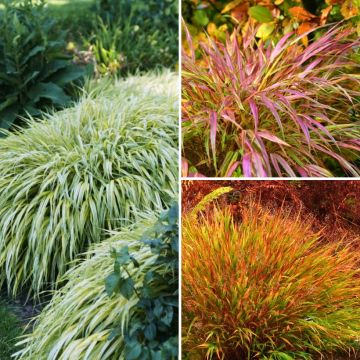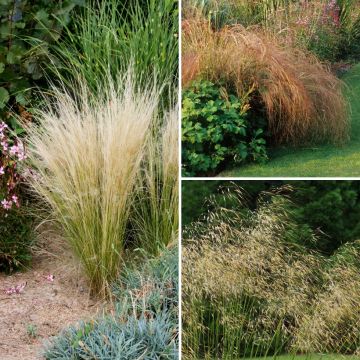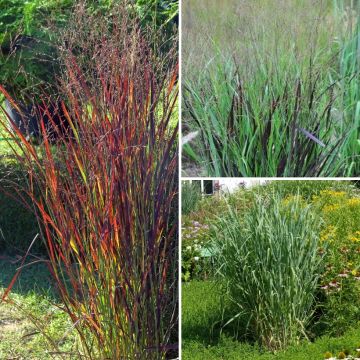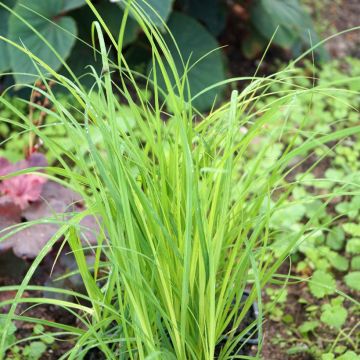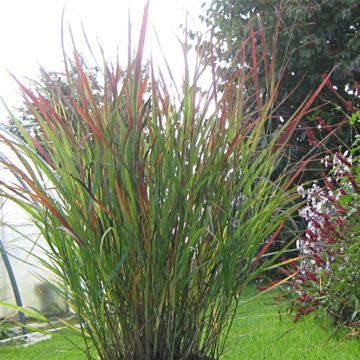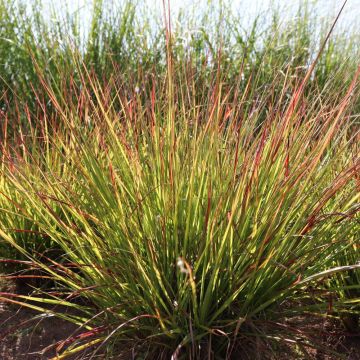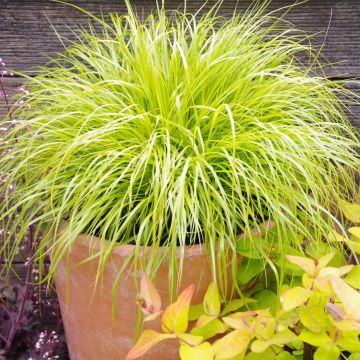
Planting grasses
Why, when, and how?
Contents
Ornamental grasses have become essential in our gardens. This is hardly surprising as they possess valuable qualities in the eyes of gardeners: they offer soft and natural forms, are easy to cultivate once established, and adapt to various conditions. They charm us with their graphic appeal and enhance other plants, creating a stunning backdrop or a uniform carpet that highlights the brightest flowers. With their flexible foliage, they bring a very natural effect to the garden, both wild and contemporary. Depending on the varieties, they can be deciduous or evergreen. Some feature beautiful coloured and variegated foliage. At the end of summer and in autumn, they produce a very light and airy flowering in spikes. Discover all our tips for successfully planting and cultivating them in the garden!
When to plant grasses?
Grasses can be planted in spring, from March to May, or in autumn, in September and October. In regions with cold and wet winters, it is preferable to plant them in spring, as young plants will have the whole summer to establish themselves before the first frosts. In contrast, in regions with a milder climate, autumn planting is ideal: the still warm soil and regular rainfall promote rooting. Just be sure to avoid planting too late in autumn, especially if your soil is heavy and poorly drained, to protect your grasses from excess moisture and early frosts.
Where to plant them?
Most grasses thrive in sunlight or under light shade, but few can tolerate dense shade. They will flourish in any well-drained soil, even if it is not very fertile… They are a good solution for greening poor, dry land. Or for creating a low-maintenance garden that requires no watering, fertiliser, or upkeep! However, some grasses (for example, Hakonechloa) prefer cool soils, while rushes, Giant Reed (Arundo donax), or reeds (Phragmites australis) will thrive at the water’s edge!
Finally, some grasses adapt very well to pot cultivation! For example, choose Pennisetum setaceum, Carex oshimensis, or Hakonechloa macra. When combined with other perennials like verbenas or anthemis, they will add structure and lightness to your planters!
→ Read also: Which grasses for sandy soil?, Which grasses for calcareous soil?, and Which grasses for acidic soil?.
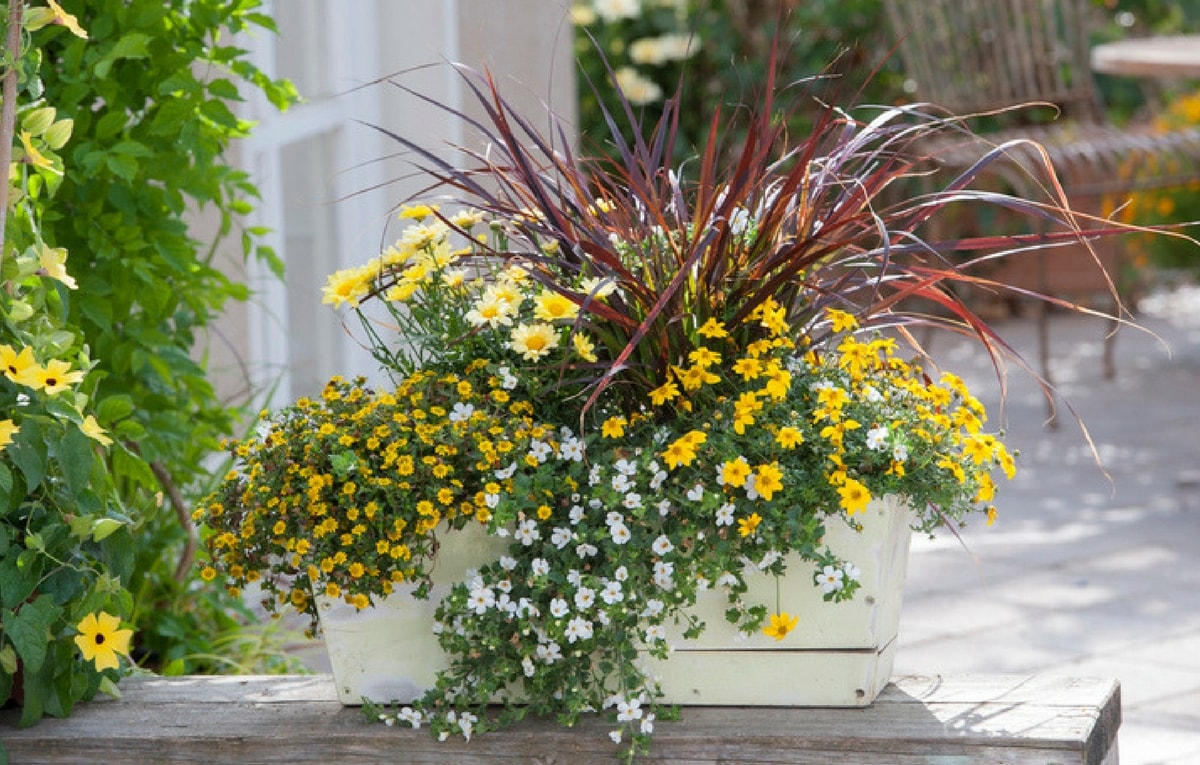
Grasses bring lightness to planters! Here, Pennisetum with Anthemis, Sanvitalia, Bacopa, and Bidens. (Copyright Friedrich Strauss – Biosphotos)
Discover other Ornamental grasses
View all →Available in 0 sizes
Available in 1 sizes
Available in 0 sizes
Available in 0 sizes
Available in 1 sizes
Available in 0 sizes
Available in 1 sizes
Available in 1 sizes
Available in 1 sizes
Available in 2 sizes
How to plant grasses?
For a successful visual effect, plant your grasses in groups. The smaller varieties, such as fescues, carex, or stipa, benefit from being grouped with at least five young plants to create harmonious carpets or backgrounds in your flower beds. In mass, they provide structure and lightness to your landscaping compositions.
To successfully plant your grasses, follow these simple steps:
- Dig a planting hole twice as wide as the root ball. If your soil is heavy or poorly drained, add gravel or coarse sand to the bottom to ensure good drainage.
- Place the root ball in the hole, ensuring that the plant is positioned at the same height as in its original pot. Do not bury the base of the stems, as this could harm the plant.
- Fill the hole with the extracted soil and lightly firm it down.
- Water generously to aid establishment.
- Once well established, grasses require little watering, but it is important to hydrate them regularly during the summer following planting to encourage their rooting.
Good to know: Some grasses, such as reed canary grass (Phalaris arundinacea), have invasive rootstocks. Avoid planting them near delicate small plants that may be smothered.
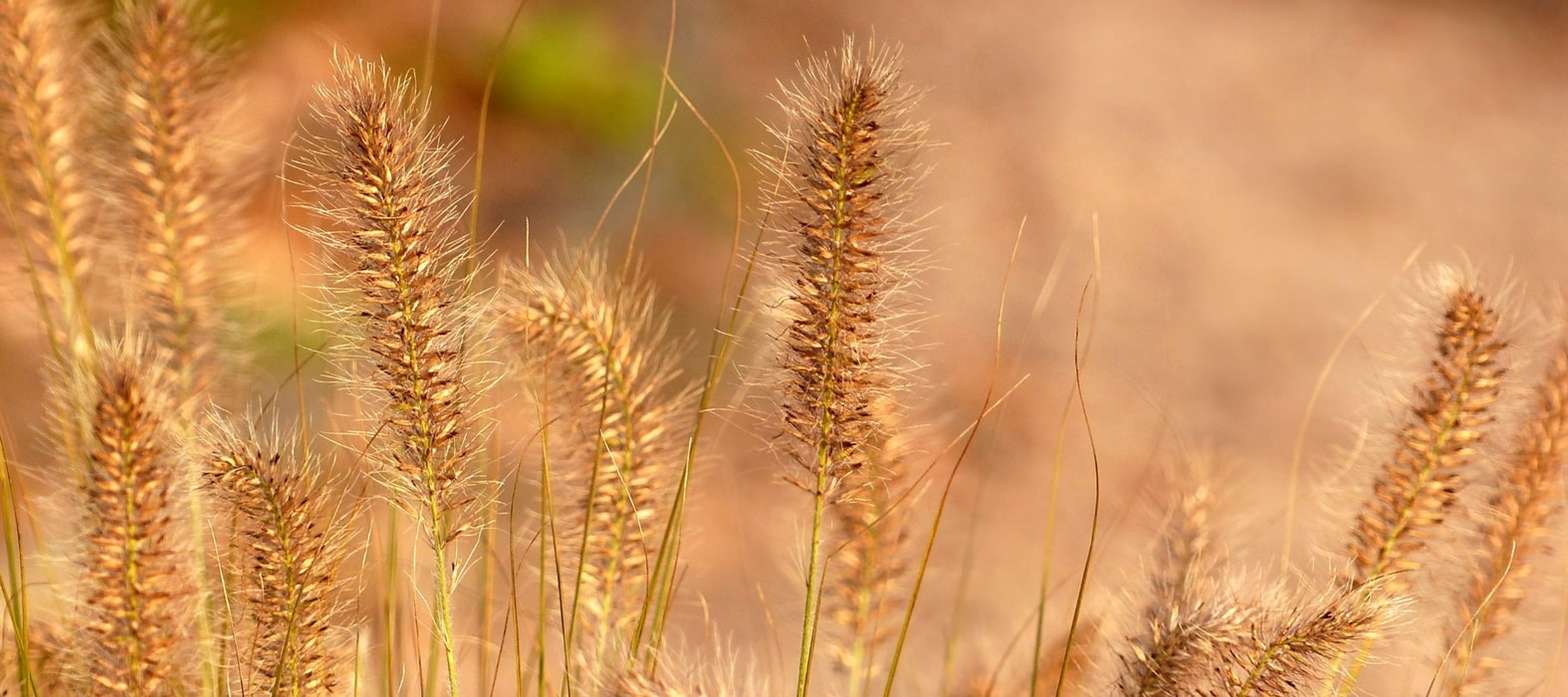
How to care for grasses?
Once well established, grasses require little maintenance, especially if their location suits them. At the end of winter, cleaning the clumps is the main task to be carried out: deciduous varieties should be cut back to encourage their regrowth in spring, while evergreens only need a “combing”. This operation involves removing dead leaves by hand or with a rake to give them a tidy appearance.
Some vigorous grasses, such as Arundo donax or Carex muskingumensis, may require occasional control to prevent them from taking up too much space. If their growth becomes excessive, do not hesitate to reduce their size or remove unwanted parts.
Finally, we recommend dividing your grasses every 3 to 5 years. This operation, to be carried out in spring or early autumn, helps rejuvenate the clumps, improve their growth, and multiply your young plants for other areas of the garden. Grasses thus become more beautiful and vigorous year after year!
To learn more, check out our video tips on Pruning a grass and Dividing a grass. And our articles: Grasses, those that are pruned, those that are combed.
- Subscribe!
- Contents































